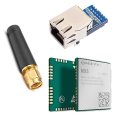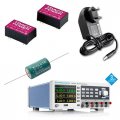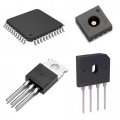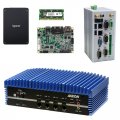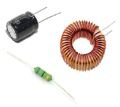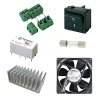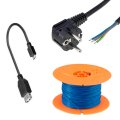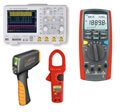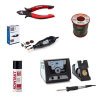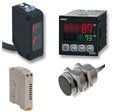There is a large selection of wireless communication interfaces within IoT technologies for wireless data transfer. In the previous article we have described in detail GSM, LTE, Bluetooth and WiFi. Now, let's take a closer look at the other interfaces used in the IoT - LoRa, LoRaWAN, SigFox and NB-IoT.
This is an archive article published 10/13/2017. Some information may no longer be up to date and in line with the current state. Please contact us in case of interest.
LoRa
LoRa is a very reliable wireless technology that serves to transfer a small amount of data over a long distance. The basic element of this technology is the modulation of spectrum spread, making LoRa resistant to interference. Another advantage of this technology is two-way communication and especially low energy consumption. The base device (base) is capable of covering in a short time a large area. The range transmission depends on the barriers in the territory such as settlement of the territory or its landscape. For data transmission in Europe is used 868MHz frequency band.Advantages: low power consumption, long range, high resistance to interference
Disadvantages: low transmission speed
Producers: IMST, HopeRF
LoRaWAN
LoRaWAN specifies the Low Power Wide Area Network (LPWAN) communication protocol and network architecture for the IoT system. It provides device-gateway-server system of communication. The gateway communicates with the server via a standard IP connection and end device uses single-hop wireless communication with gateway. End-device communication is usually bi-directional. Mostly the star architecture is used because longer battery life. Extending the life of the battery and end device, as well as maximizing total network capacity is secured by network server that manages data transfer and an RF channel separately for each end device via Adaptive Data Rate Scheme (ADR). The frequency band 868MHz is used for transmission and the data speed is in range 0.25 kb/s to 50 kb/s. Since data security is also important, several data encryption is standard - network and application security, and security on the device. The endpoint has assigned unique 64-bit identifier and two 128-bit keys that are encrypted by AES.Advantages: low consumption, long range, worldwide standard, existence of public operators
Disadvantages: charging data transfer to operators, complicated parameter settings
Producers: IMST
SigFox
SigFox SigFox is a technology for wireless transmission of low amount of data. IoT devices can communicate over relatively large distances (up to 50km in terrain and 10km in built-up area). Data transfer is reliable and secure. The encoding is implemented on the application layer using AES128 and 16-bit authentication. IoT devices using this technology are typically characterized by low power consumption, so the battery can last for more than 10 years. Sigfox is highly resistant to interference. For data transfer is used 868MHz frequency band at a speed of 100bps. The signal is sent by the device and all the base stations around can receive signal, decode it and then send it to the server. The data is then sent to the application. The message is authenticated using the unique private key assigned to that device.Advantages: low power consumption, long range, high coverage, roaming data transfer without extra charges
Disadvantages: charge for data transfer by operator, one way communication
Producers: Radiocrafts
NB-IoT
NarrowBand IoT (NB-IoT) is a new technology that uses the LPWAN network. It allows you to connect a large number of devices through already existing frequencies. Transmission speed is 250kbps. Not yet in operation. It should be launched during 2018-2019.Advantages: Low consumption, roaming data transfer without extra charges, fast networking
Disadvantages: new technology
Producers: Quectel
The best features for creating a connection are Lora, LoraWan and Sigfox. They are designed to send small amount of data over large distances in a variety of environments.
Soon we will bring you a new series of articles about the Industry 4.0.
Do not miss these articles
Do you like our articles? Do not miss any of them! You do not have to worry about anything, we will arrange delivery to you.
